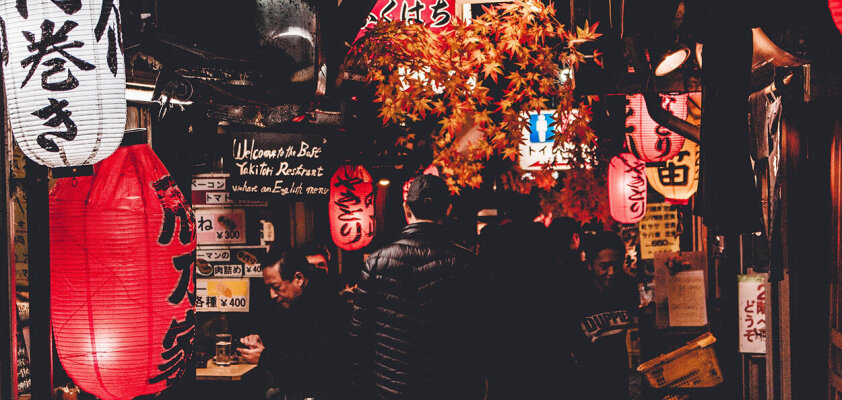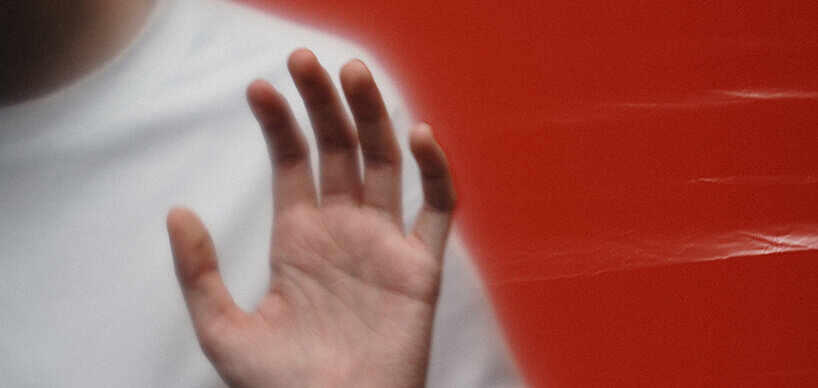Hikikomori - A Social Phenomenon with Clinical Significance

Inhaltsverzeichnis
Hikikomori - Facts and figures The world is a hamster wheel - social phenomena and their causes, symptoms and boundaries Hikikomori - an attempt at classification Hikikomori - latest research results Attention: Risk of confusion Hikikomori - approaches in prevention and rehabilitation Corona - a hint with the fence post? And suddenly everyone is a hikikomori A reminderof enlightenmentWhat begins with a few days of disconnection from the outside world often ends for many, mostly male, Japanese individuals with complete shutdown. Social withdrawal, lasting for months to years, literally puts the lives of Hikikomori on hold. In such cases, parents often catch the standby mode of their (adult) children, who move back into their homes, where they usually remain alone in just one room. Sleeping, binge-watching series, and perhaps occasional internet use now define their existence, with virtual interactions also typically severely limited.
Hikikomori – Facts and figures
(ひきこもり, 引き籠もり, or 引き篭り) refers to individuals affected by the social phenomenon of the same name. This has gradually spread in Japanese society over the past three decades. Nowadays, the disorder is not only observed in adolescents and young adults but also in older individuals. In mid-2019, there were a total of 1.2 million affected individuals, with over half a million between 18 and 40 years old and the rest between 40 and 64. These numbers should be approached with caution as they vary significantly depending on the source and definition. Also, the degree of stigma associated with mental illnesses is so significant that the actual prevalence is often obscured. Hikikomori was named in 1998 by Tamaki Saito, a Japanese psychology expert in child and adolescent psychiatry who first identified this condition. It roughly translates to withdrawal, isolation, or is also interpreted as withdrawal or the invisible. Saito's research and popular books are controversial in Japan because, according to the author, Hikikomori is a social or culturally bound phenomenon. These issues always have their causes on a societal level. The long period of ignoring this problem by the government has created far-reaching issues at that same level. In Japan, many elderly people rely on care from their children, which is now no longer guaranteed for many families. Finally, after more than 20 years, there is now a political response to the issue: Support for affected families has been promised by the Tokyo government. This is also because Japan's demographic shift, i.e., the aging of the population, further complicates the same problem.

The world is a hamster wheel - social phenomena and their causes, symptoms and boundaries
The world of modern societies is characterized today by capitalism, individualization, and globalization. Further influenced by digitization and performance pressure, more and more people find themselves on increasingly smaller square meters. In Japan, in particular, strong normative pressure prevails. Most of us initially run at full speed against this background; some eventually burn out, while others never manage to fully launch. Burnout is mostly associated with work-related exhaustion, characterized by the core symptom of emotional fatigue. In the further course, this is accompanied by depersonalization, a state of cynicism, indifference, and negativism. Additionally, performance decreases due to perceived overwhelm. In the late stage, burnout culminates in an (inner) distancing, ultimately resulting in full-blown depression and immediate isolation. The course of burnout is never uniform, meaning physical and psychological symptoms manifest in varying combinations and severity. On a physical level, these may include chronic fatigue, weakness, nervousness, concentration and sleep disorders, as well as stress intolerance. Psychologically, symptoms may involve diminished self-esteem, anxiety, helplessness, hopelessness, and, ultimately, even suicidal tendencies.

The burnout syndrome was recently included in the ICD-11, the international statistical classification system for diseases and health-related problems. However, for a long time, it was considered a purely culture-related phenomenon with symptomatic features but without the status of a disease. For Hikikomori, a diagnostic classification into different categories, such as depression or schizophrenia, is still pending. This is due to the still young state of knowledge in the research landscape. However, the emergence of comorbid conditions has already been identified, including depression, anxiety disorders, panic disorders, psychoses, and personality disorders. The question of which came first, the chicken or the egg, remains unanswered, as often is the case. A tragic accompanying feature of the overall picture is also an increased risk of suicide.
Hikikomori - an attempt at classification
Also with Hikikomori, one speaks of a syndrome since certain characteristic symptoms repeatedly manifest. These include the loss of joy in life, increasing uncertainty, shyness towards people, and decreasing willingness to communicate. Furthermore, ultimately the loss of friends due to the onset of allegedly voluntarily chosen isolation. The increasingly prevalent symptomatic condition, based on the results of a recent study by Roseline Yong and Kyoko Nomura (2019), is primarily attributed to the core symptom of anxiety, which is primarily caused by relationship problems. Other media point to the presence of excessively high expectations, as well as societal pressure and associated fears of failure. Additionally, a lack of role models, bullying, traumas, as well as economic circumstances are mentioned, along with overcrowding. The backgrounds of the various types of anxiety must, therefore, be further researched before they can be considered valid and provide further insights into possible countermeasures in both therapeutic and preventive settings. Also, whether the causes are internationally the same or culturally conditioned differences are relevant remains to be seen. In Japan, certain symbiotic mother-child relationships seem to play a facilitating role, which could explain the return of many Japanese to their parents' home.
Hikikomori - latest research results
In their still young sample from the year 2019, Yong and Nomura identified 58 individuals (1.8%) suffering from the syndrome out of 3,287 people. Among the affected, 20 were female. All 58 individuals had hardly or not at all left their homes during the last 6 months. Valid reasons, such as other illnesses, were excluded. The sample was drawn from 200 different urban and rural areas in Japan, with the target group ranging from 15 to 39 years old. There were no regional focal points, and the number of family members or societal milieu was equally irrelevant. Alongside the main factor of interpersonal difficulties, there were frequent occurrences of previous psychiatric treatments, school or university dropouts, and a tendency toward self-harming behavior. The affected individuals often expressed concerns about meeting acquaintances or friends and receiving negative evaluations from them. Another criterion that frequently appeared among the affected was the inability to fit into groups. Against this background, the authors suspect a connection to the feeling of humiliation due to current life circumstances, which is associated with a decrease in self-esteem.

Attention: Risk of confusion
Due to the common theme of fear and isolation, Hikikomori is often referred to as social phobia in many media outlets. However, symptomatic overlaps are not sufficient to make such an assignment. The significant difference is the focus on fear of individuals within the personal environment, such as other family members, friends, and acquaintances, or, conversely, the extended focus on all people. This difference suggests different causes for both conditions and requires different therapeutic measures associated with it.
Hikikomori is also occasionally associated with the anxious-avoidant personality disorder. This disorder is characterized by feelings of inferiority, an exaggerated need for security, constant tension and worry, as well as social inhibition. It is also associated with a desire for acceptance and affection, lack of receptivity to criticism, and fear of rejection. However, this association is not yet valid due to a lack of research findings.
Hikikomori - approaches in prevention and rehabilitation
Strategies to (preventively) counteract Hikikomori can include support measures related to communication skills, dealing with societal expectations, and community belonging. A promising forecast for preventing or supporting school or university dropouts was presented by Yong and Nomura. For those already suffering from Hikikomori, non-profit organizations such as New Start or Hidamari (The Warm Place) are working on slow interpersonal acclimatization through an assigned support person, usually over several years, to reintegrate patients into society and work. The so-called Nido therapy, similar to our systemic family therapy, is also used in this process. Other paths involve supervised living, as known in many Western countries, to facilitate such a transition. However, experts view complete rehabilitation critically, as not everyone in a state of total withdrawal can be brought back. Those who have spent more than a year there will likely never work full-time or build long-term relationships. Additionally, there is a need for societal awareness, overcoming stigma, and reducing shame.
All in all, a long and challenging road for Japan. A country with a culture where one-third of the working population lives in insecure employment conditions without financial security, job protection, and hope for career success, yet must maintain appearances. In which meeting collective norms, let alone personal dreams, is only possible under great pressure and with a stroke of luck. The research landscape also has a significant amount of analytical work ahead to gain medical and societal recognition for Hikikomori, similar to the burnout syndrome, to provide the best possible support for its patients. Valid research findings are urgently needed to counter the baseless claim of a voluntary withdrawal into decades of loneliness, to prevent stigmatization, and to make reintegration into life and a happy future possible.
Corona - a hint with the fence post?
Since January, the pathogen has been spreading rapidly around the globe. In Japan, too, an increasing number of individuals are testing positive for the respiratory disease Covid-19 caused by the CoV-2 virus. However, the pandemic and its global repercussions have not only resulted in negative effects. Positive impacts on flora and fauna, such as improved air quality due to reduced emissions or new laws regarding wildlife trade in China, have been observed. Yet, the often highly restrictive measures to contain or slow down infections bring entirely new problems for humans.

And suddenly everyone is a hikikomori
Since January 2020, a veil of fear has descended upon the world. Suddenly, many people realized that, contrary to their general assumption, they are vulnerable, and control is no longer a daily illusion. Confined to our homes to protect high-risk groups, we were all thrown back on ourselves and our immediate loved ones. Our lives suddenly came to a halt, at least temporarily, before gaining (partial) new structure. However, life under the understandable restrictions carries repercussions in a global system whose gaps are responsible for the misery. For example, a reduced utilization of healthcare services, such as hospital visits, has been observed. Nevertheless, common health issues, such as heart attacks, have not decreased with the pandemic. Rather, people avoid doctor's offices and hospitals due to fear of infection and may not receive accurate treatment. Important surgeries have also been postponed by clinics. Individuals with mental illnesses are particularly suffering from the current situation and can only resort to online options like telepsychology or telephone counseling to a limited extent. However, the demand from non-mentally ill individuals for these services has massively increased as well because the uncertainty caused by the loss of control and the forced disruption of everyday habits overwhelm them. The limitation of physical movement, the perceived confinement with family members or partners, or even loneliness due to a lack of social participation or role loss are challenges that many people cannot overcome. While some adapt to the situation after a period of adjustment, restructuring their lives successfully, others are left with feelings of complete overwhelm and helplessness, grappling with existential fears, job loss, poverty, or the multiple burdens of work, relationships, and childcare. Particularly, the originally protected high-risk groups, namely older individuals and the sick, are affected by aspects such as loneliness, poverty, and subsequent harm. The long-term health, economic, and personal consequences of the imposed protective measures are yet to be seen, but they do not promise anything good.
A reminder of enlightenment
Worldwide, COVID-19 is currently exposing systemic weaknesses and simultaneously driving progress and development on a rapid scale. Healthcare, digitization, and work organization are likely the areas where the most hopefully long-term changes are emerging. In a country like Japan, the reform character in the field of work could take on revolutionary proportions. Home office for Japanese people is rare. Only 20% of companies in Japan were open to this before. In general, those who are at home are either unemployed or even hikikomori. The disruption of work methods could bring a positive turn in terms of empathy for the latter and support measures for their reintegration, which suddenly become necessary for other societal groups as well. On a preventive level, accepted norm-breaking due to restructuring could eventually lead to a new societal form that is freer, more flexible, understanding, and open. Because in times of COVID-19, everyone comes closer, and the world becomes smaller. Connections that were weakened by the pursuit of capitalism, individualization, and the ethos of achievement could gain new significance in the fight against isolation and loneliness. The Spanish flu fueled the Industrial Revolution, so despite the great suffering it causes, the COVID-19 pandemic could turn out to be an uncut diamond.











-from-the-yakiyaki-grill-pan.jpg)




